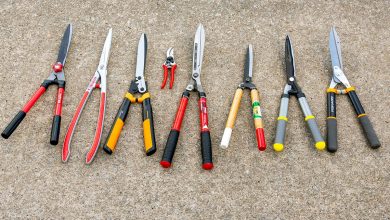10 steps to create your own garden at home: Quick and easy guide
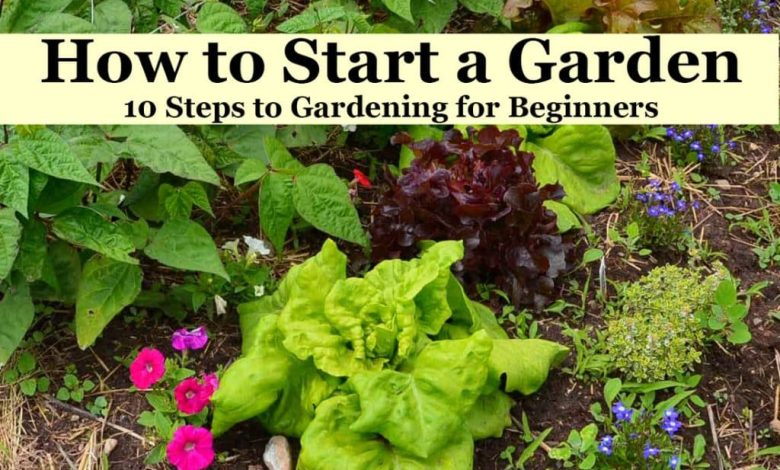
Today we are going to see what are the steps to set up a garden at home. Maybe you want to start farming but you have doubts about whether someone from the city, without much knowledge about plants, will be able to cultivate a garden at home and stock up on it to eat.

Or you may think that this orchard is a thing of the towns, of rural areas… and that it is difficult to have a garden at home if you live in the city.
If you are in any of these cases or, simply, if you have decided to cultivate a garden but do not know where to start… you are in luck! Today we will see the keys to successfully cultivate a garden at home. We will review some of the most important aspects of garden cultivation, which we have already discussed in other blog posts.
1. Choose the type of orchard that best suits your conditions
If you have a garden you can install your garden directly on the ground, on raised terraces… If you don’t have that much space or you prefer not to bend down to work in the garden, you can put cultivation tables on the roof, in the patio…, a planter on the terrace, in the windows, or in any other place…
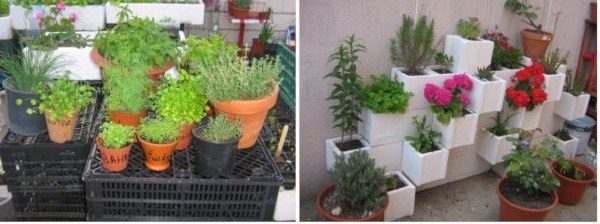
There are many possibilities when setting up a garden at home ! If you choose to garden in containers you also have several options, even with recycled containers and objects. (Find out more about this by searching for the word «containers» or «garden types» in the search box in the top right corner.)
2. Choose the irrigation system
It will be one of the first decisions to be made, because the first tasks of the garden at home depend on it: such as making ridges (if it is going to be irrigated by furrows), or placing the seeds/seedlings at a suitable distance depending on of the water emitters (if it is going to be irrigated by dripping or aspersion).
I always recommend micro-irrigation or localized irrigation systems, such as drip irrigation, micro-sprinkler or exuding tape or exudation irrigation, since less water is used and they are more comfortable and less “slaves” when it comes to watering.
But if you have a well or plenty of water to irrigate, you can also make ridges to irrigate by furrows, although this type of orchard is more work than those with an automatic irrigation system, such as drip. In this video from Canal Agrohuerto TV you can see how Sandra prepares the ridges:
Much more about the types of irrigation systems in this link and in other posts that you will find in the category “How to cultivate a garden”.
3. Choose the garden crops and their placement
Choosing the crops for the garden at home is a decision that will depend on your tastes, your experience, the space you have, the light… There are many plants that can be grown in the garden in addition to the typical vegetables such as lettuce, tomatoes and onions.
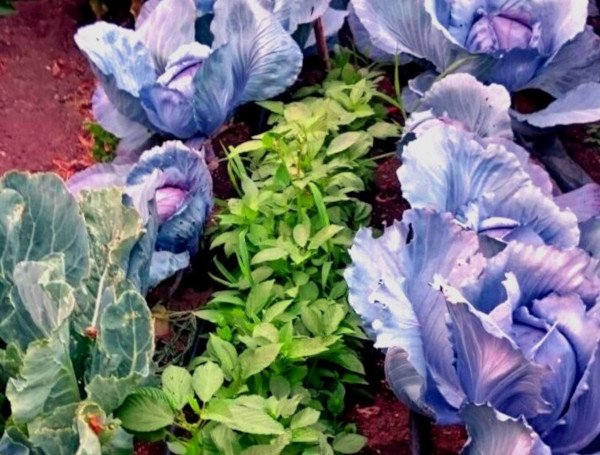
If you are new to this you can try “ garden plants for beginners”. There are also orchards with little sun, where it is better to put plants that require little light.As we have seen in other posts, there are beneficial plants such as some flowers, hedges or red fruits, which have many advantages for the garden, such as their repellent smell for pests or the colors that attract beneficial insects.
Once the crops have been chosen, it is important to design a good placement, since there are crops that have a beneficial association, and others that are incompatible with each other and that it is better not to put next to each other. To learn more about this you can see the post about companion planting in the garden.
4. The substrate or «earth»
Choosing the ideal substrate is one of the key decisions when it comes to growing a garden at home. Not just any cheap universal substrate can be suitable for garden plants, and sometimes cheap is expensive. (Álvaro already taught us some keys to choose a good substrate in several of the Agrohuerto TV videos).
There are also other more modern possibilities, such as substrates for hydroponic cultivation, or even cultivation without substrate or NTF, which is based on the continuous circulation of nutrient-rich water in the root zone.
5. Prepare and fertilize the substrate
From year to year it is advisable to plow or remove the soil with a hoe or, more superficially, with a rake. This is done to remove weeds and fluff up the soil.
You also have to fertilize so that the plants have the necessary nutrients to grow and give good harvests. There are many ways to fertilize the garden, in this link I leave you some ideas of organic and natural fertilizers and fertilizers for the garden at home (many of them can even be made at home, such as compost).
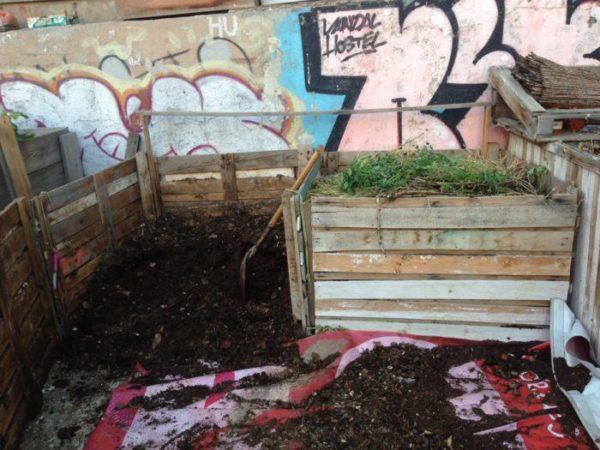
6. Seedbeds: sowing and planting
Usually, especially for beginners, it is better to make some seedbeds first rather than planting directly into the final soil. This way they will germinate more easily and we will be able to take better care of each little plant. In the post How to make a seedbed we saw the keys to go step by step.
Transplanting or planting in the final land will have to be done very carefully, as Álvaro told us in this video:
7. Prevention and fight against pests and diseases
If you want a garden at home that is ecological and without the presence of chemicals, you must use the appropriate products. To prevent and eradicate pests and diseases, you can buy organic phytosanitary products or prepare natural remedies yourself.
In my opinion, the best way to eliminate pests and diseases in a natural and ecological way is the integrated fight.
Integrated control is an easy technique that combines prevention with various ecological and safe methods for health and the environment, such as insect traps, plant preparations, or the use of beneficial insects or «pest enemies».
8. Cultivation work
Weeding is a very beneficial task for most garden crops. It consists of removing the earth with a rake or small hoe. For some jobs, like this and other cultivation tasks, there are basic tools that cannot be missing in your garden.
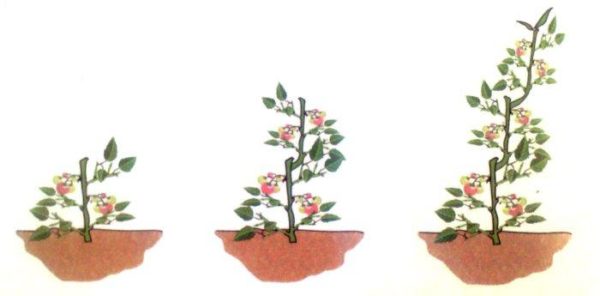
Another task that is recommended in some horticultural species is pruning. Pruning a tomato plant, a pepper plant, or a courgette can be very favorable for the harvest, which is usually of much better quality and with larger fruits.
9. Other aspects for an ecological and sustainable home garden
If what you want is a sustainable garden, in addition to using only natural products instead of chemicals, there are other actions that you should keep in mind: recycling rainwater, reusing organic remains from the kitchen and crop residues to make compost, the use of recycled materials, the presence of flowers, hedges and other beneficial plants in the garden that attract pollinators … (We have already talked about all of this in other posts that you can find in the “Organic Gardens” category).
10. The Garden Harvest
The last step of the growing cycle is the harvest. It must be done at the optimum moment of maturation, and this depends on each type of plant. There are some horticultural ones from which you will get even more than one harvest, and others, such as aromatic ones, that can last even years. Use the appropriate scissors and instruments and cut the vegetable without damaging the rest of the plant.
The way of harvesting is different for the different types of vegetables, so take a look at our crop sheets if you want information about a specific plant.

I hope that these tips and the experiences and opinions that other urban gardeners have left on the blog, will help you to successfully start a garden at home! There are many benefits of gardening , and best of all, anyone who wants to can do it!

![Photo of Prune a Walnut Tree: [Importance, Season, Tools, Considerations and Steps]](https://www.complete-gardening.com/wp-content/uploads/2022/08/prune-a-walnut-tree-importance-season-tools-considerations-and-steps-390x220.jpg)
![Photo of The White Fly (Aleyrodidae): [Identify, Fight and Prevent It]](https://www.complete-gardening.com/wp-content/uploads/2022/08/the-white-fly-aleyrodidae-identify-fight-and-prevent-it-390x220.jpg)

